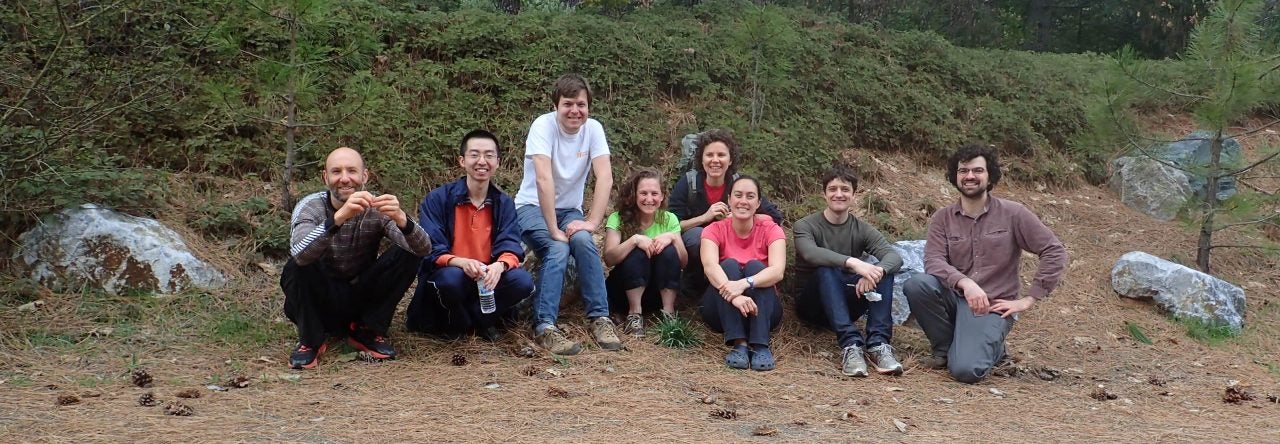Understanding how the genetic mechanisms that underlie sexually dimorphic traits evolve is a major focus of Kopp lab, but what are the macroevolutionary consequences of dimorphism? Theory suggests that dimorphic taxa ought to speciate more often than their monomorphic sisters, but this prediction has been difficult to test. Using comparative phylogenetic methods, this article finds support for an increased rate of speciation amongst dimorphic bird taxa. It is interesting to consider how macroevolutionary trends like species selection might be predicated on the activities of deeply conserved genetic modules like Dsx/Scr. Does anyone know if DMRT genes like Dsx are involved in specifying pigmentation pathways in verts?
Month: May 2012 Page 1 of 2
This paper shows that the Scr protein binds DNA as a homodimer in at least some contexts. One interesting question is whether this prediction can be used to search for candidate Scr binding sites in enhancer sequences?
A quick overview in Nature Methods.
FYI for the students – here’s what Artyom will be teaching next year, see if anything looks potentially interesting.
Fall – BIS2A (Introductory Biology); this section will cover biochemistry, genetics, cell biology and development with some bits of evolution, ecology, and biogeochemistry mixed in. Graduate students interested in TAing for this class should contact the Microbiology office.
Fall – Genomics section of PBG 200A (Population Biology graduate core).
Winter – EVE150 (Evolution of Animal Development). This is a “play”, advanced class based mainly on the reading and discussions of original literature.
POSSIBLY – Insect transgenic technologies. This is an advanced undergraduate / graduate class I teach occasionally, whenever we accumulate enough interested people. If you would like to take this class, contact me. I will decide whether I’m teaching it by the end of Fall 2012 quarter.
Pavlicev and Wagner have a new paper in TREE where they “discuss evidence for variation in pleiotropy and propose the selection, pleiotropy and compensation model (SPC) for adaptive evolution. [This model] predicts that adaptive change in one character is associated with deleterious pleiotropy in others and subsequent selection to compensate for these pleiotropic effects.” They talk about the implications of this model for the genetic basis of evolutionary change and many other things including sexual dimorphism Take a look – this is well worth reading.
Here is a paper in Evolution looking at the evolution of sex-specific color patterns in dragon lizards. Using phylogenetic analysis, the authors conclude that there are “clear sex differences in colour pattern complexity, which were positively correlated with both sexual dichromatism and sexual size dimorphism, consistent with the idea that sexual selection plays a significant role in the evolution of colour pattern complexity”.
This is just for fun. Such complex genetic architecture is typical of most complex traits in humans and other organisms – recall Matt Rockman’s review that Judy presented a while ago. So their conclusions may elicit a “duh” reaction from us evolutionary biologists, but from the social science point of view it’s enjoyable.
Here is a new paper that looks at the evolution of gene expression on the W chromosome in chicken breeds that were selected for either female-specific or male-specific traits. The results are not unexpected, but still quite interesting – take a look. If you are interested in sexual conflict or the evolution of sex determination and sex chromosomes in general, look up other papers by Judith Mank – lots of good stuff.
A brief history and update on nanopore sequencing in Science.
Take a look at this paper from the last issue of Nature. From the abstract:
“Here we confirm, using species-level molecular phylogenies for five families of non-passerine birds, that colour polymorphism is associated with accelerated speciation rates in the three groups in which polymorphism is most prevalent. In all five groups, colour polymorphism is lost at a significantly greater rate than it is gained. Thus, the general rarity and phylogenetic dispersion of colour polymorphism is accounted for by a combination of higher speciation rate and higher transition rate from polymorphism to monomorphism”.
It would be interesting to hear Brian Moore’s perspective on the phylogenetic analysis. And of course I wonder whether the same pattern would hold outside of birds.
